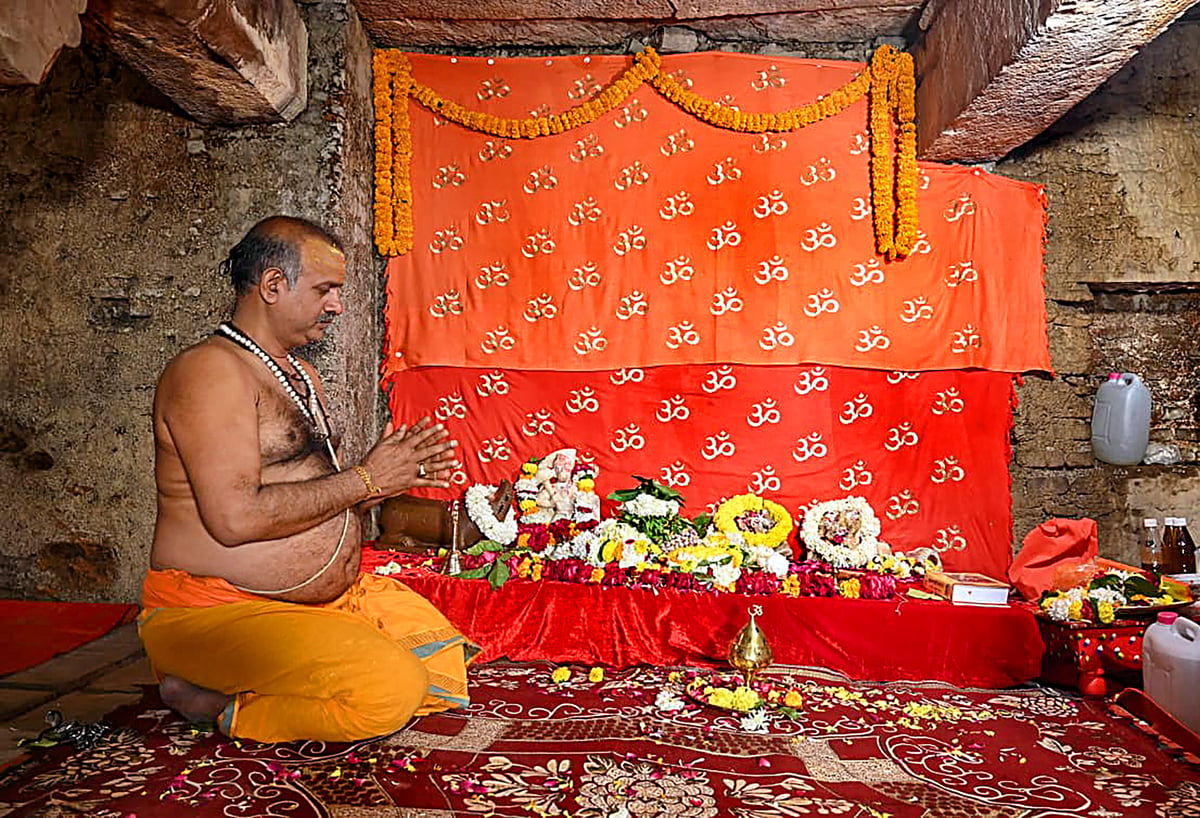Gyanvapi: A huge crowd of devotees was present at Shri Kashi Vishwanath Temple in Varanasi on Saturday. During this time, more than one lakh devotees saw the tableau of Vyas ji’s basement located in Gyanvapi complex till Shayan Aarti. The process of tableau darshan started from Mangala Aarti and continued till Shayan Aarti. All the rituals of Shayan Aarti were completed with Mangala Aarti in the basement of Vyas ji also. On Saturday, darshan worship started with Mangala Aarti at Shri Kashi Vishwanath Temple. The visitors who reached Mangala Aarti also had a tableau darshan of the basement. After Mangala Aarti, the doors of the temple were opened for common devotees. Among the devotees coming to worship Baba Vishwanath, the most eagerness was to see the idols kept in the basement of Vyas ji. After first having darshan of Baba, everyone was directly reaching the basement to have darshan of Nandi seated in the temple premises. Let us tell you that the atmosphere remained normal on Saturday, the second day of the Anjuman Intejamia Masjid Committee’s appeal for closure in protest against the commencement of worship in the basement of Vyasji. However, security remained tight during this period. The permission for worship and the objections thereto will be heard in the District Judge’s court on February 5. The Masjid Committee has demanded a stay on the order of the District Judge’s court. In this matter, extra vigilance is being taken from the police and administration level. On the third day also, 10 quick response teams, 15 inspectors, 60 sub inspectors and 250 constables remained deployed in and around Shri Kashi Vishwanath Dham.
#WATCH , Uttar Pradesh: Visuals from outside the Gyanvapi complex in Varanasi. pic.twitter.com/Fj3ZofiiCp
— ANI (@ANI) February 4, 2024
55 statues of nine gods were found in ASI survey
During the survey in Gyanvapi complex, Archaeological Survey of India (ASI) has found 55 idols of nine gods and goddesses. ASI has mentioned this in its report. According to the report, out of 55, maximum 15 Shivalingas have been found. Of these, eight were found in the southern crypt and six near the western wall. The idols are of three Vishnu, two Krishna, three Ganesh, five Hanuman, one gatekeeper, two Nandi, one Apasmarapurusha, one Makara, one Mannat Teertha etc. Most of the sculptures have been found from basements. Apart from this, 14 pieces were also found. Inscriptions, terracotta, metal, glass etc. items have also been recovered during the investigation. The inscriptions include idols of deities, pestles, household items. Small utensils, pitcher, pot, pipe, hookah base and pipe, spouted utensils, jugs, various sizes of parai, purva, glasses, lamps and their fragments have been found.
Apart from this, 93 coins, tools, jewelery etc. have also been found among the metal objects of different reigns. 64 coins are from British India. These include coins of East India Company, Queen Victoria, Edward VII and George V. Some were difficult to identify due to rust. A copper coin of Scindia dynasty was also found. Modern Indian coins of various denominations like two paisa, three paisa, five paisa, 10 paisa and 25 paisa have also been found in the debris. A foreign coin of one dirham denomination of United Arab Emirates was also found. Let us tell you that the ASI team found a glass pendant and a broken Shivalinga during the survey. Apart from this, long necked and small circular vessels were also found. There is also a shining object. He has been kept safe.
402 items were found in the survey
-
stone-259
-
Terracotta-27
-
Metal-113 Glass or Shisha- 2
-
glowing object-1
There was a deep well in the first part of the southern basement.
The ASI survey of Gyanvapi has identified the materials visible outside, while GPR has also revealed the shapes inside the ground. It was revealed that there was a deep well in the first part of the southern basement. According to the survey, the well was plugged. Its depth is estimated to be eight meters and width is two to three meters. Apart from this, two and a half meters. Specific wells have also been identified. Information about the condition of the foundation, their thickness and depth, soil layer, length and width of the stones buried below has also been obtained from GPR and stratigraphy. Gravel with matrix was found in the middle and western end of the southern basement. It extends up to three meters. The basement layer is about three and a half meters deep. A hollow space of one to two meters was also found below the basement. The area around it has been filled with gravel. Below, things of the size of compartments or small rooms are indicated, but there is no difference in this.

